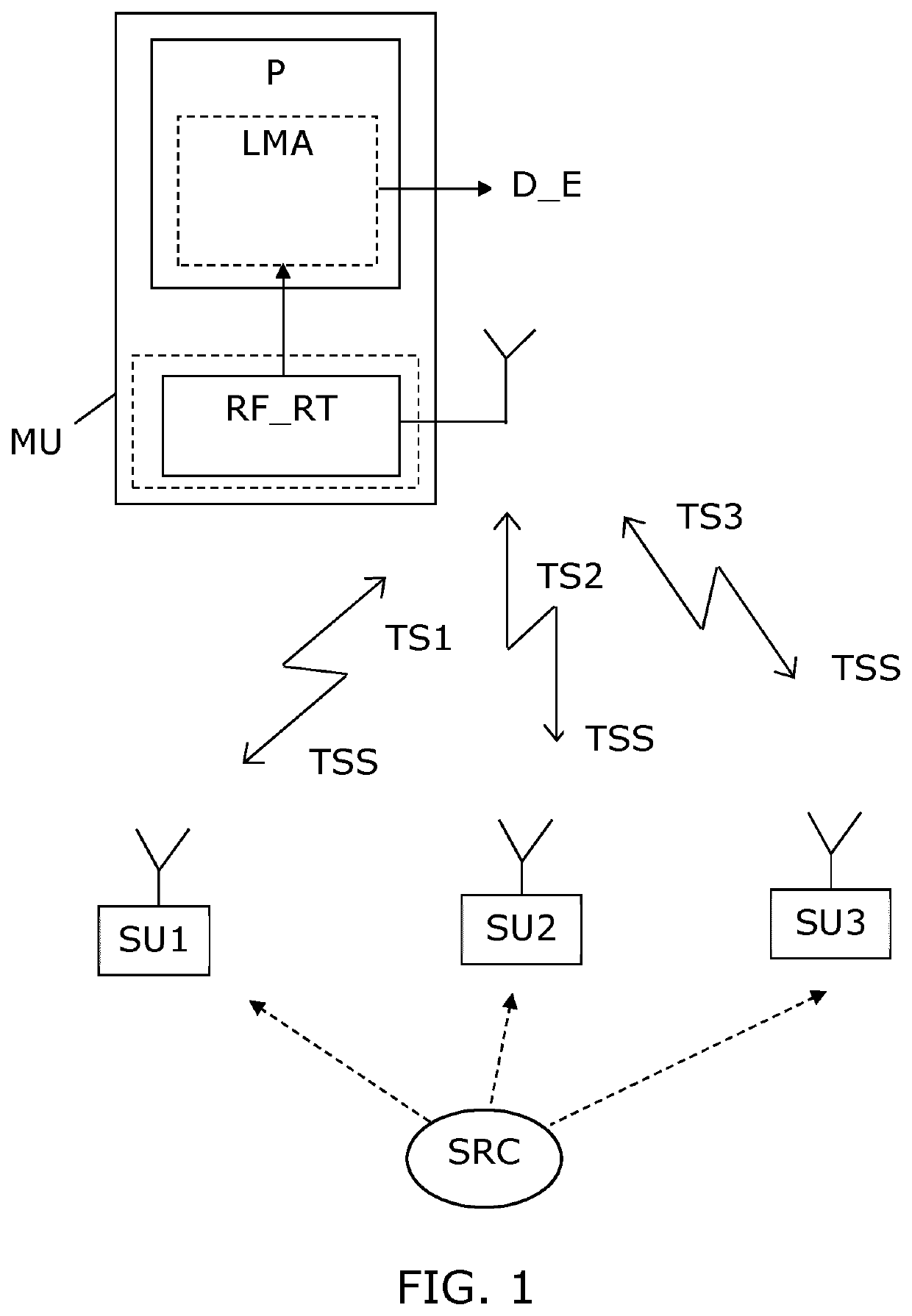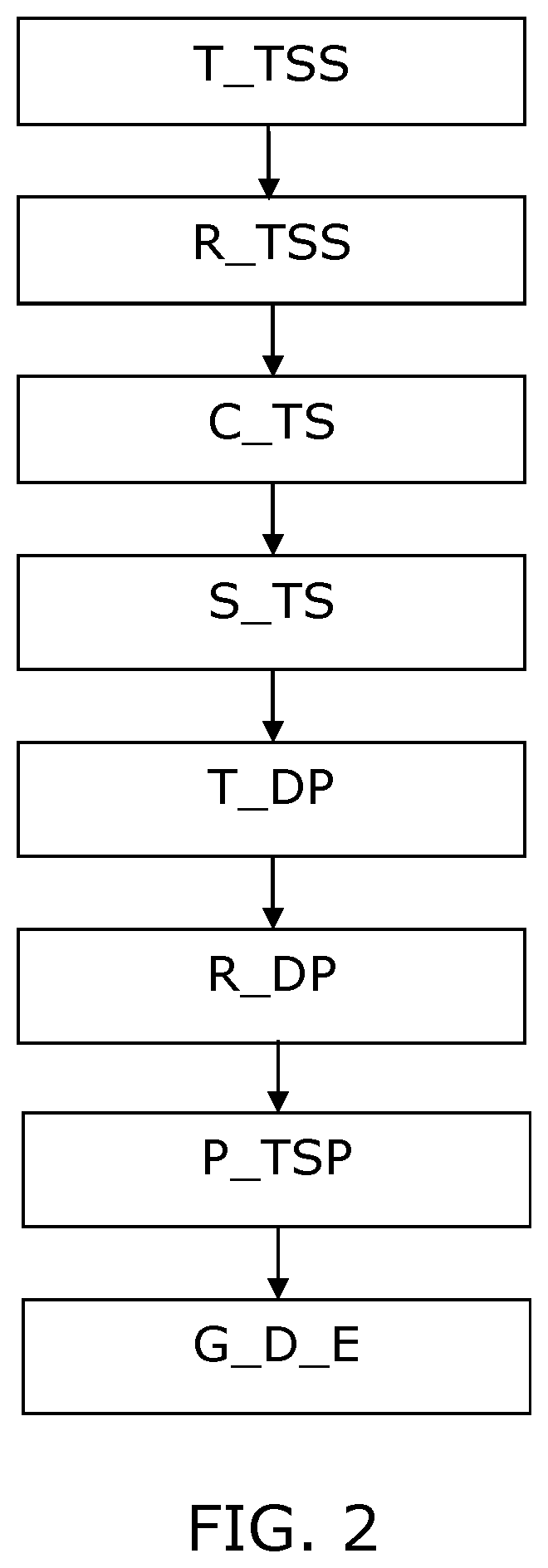System for localization of sound sources
a sound source and localization technology, applied in the field of sound and vibration, can solve the problem that the general estimate of the direction of the sound source is useless
- Summary
- Abstract
- Description
- Claims
- Application Information
AI Technical Summary
Benefits of technology
Problems solved by technology
Method used
Image
Examples
Embodiment Construction
[0049]FIG. 1 shows a block diagram illustrating in simple form a sound source localization system embodiment with three slave units SU1, SU2, SU3 positioned at different locations, and a master unit MU. A sound source SRC generates an acoustic signal (dashed lines) which is received by microphones in the three slave units SU1, SU2, SU3. The master unit MU has an RF receiver and and RF transmitter, here shown as on unit RF_RT. The RF transmitter part RF_RT can transmit an airborne wireless RF signal with a time synchronization signal TSS represented therein, e.g. a square wave signal with a frequency between 200 Hz and 2,000 Hz. The RF signal may be transmitted at an RF link with a carrier frequency of e.g. 433 MHz. RF receivers in the slave units SU1, SU2, SU3 receive the time synchronization signal TSS approximately at the same time due to the RF transmission, and this time synchronization signal TSS is then used to set timing of a recording of the acoustic signal from the sound so...
PUM
 Login to View More
Login to View More Abstract
Description
Claims
Application Information
 Login to View More
Login to View More - R&D
- Intellectual Property
- Life Sciences
- Materials
- Tech Scout
- Unparalleled Data Quality
- Higher Quality Content
- 60% Fewer Hallucinations
Browse by: Latest US Patents, China's latest patents, Technical Efficacy Thesaurus, Application Domain, Technology Topic, Popular Technical Reports.
© 2025 PatSnap. All rights reserved.Legal|Privacy policy|Modern Slavery Act Transparency Statement|Sitemap|About US| Contact US: help@patsnap.com


